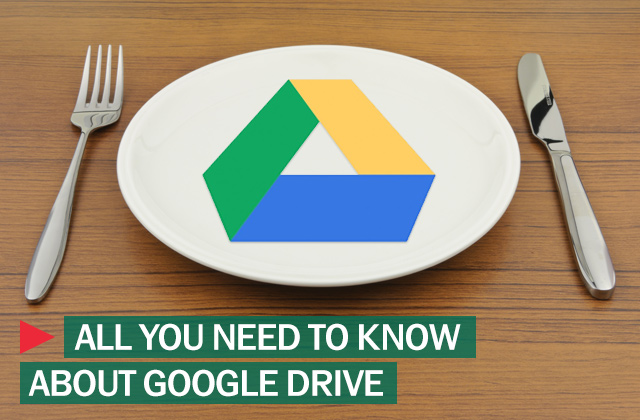A little over a year ago, most of us woke up one day and discovered that Google Docs was gone, replaced by this weird new thing called Google Drive. Then we learned that Google Drive was our old Google Docs, but supposedly bigger and better. Today nobody bats an eye at it, and really we shouldn’t have been surprised anyhow, given how much Google loves rebranding its significant features.
Features. The cloud-based built-in service comes with standard 15GB of storage (it was 5GB until just recently) for documents, photos, PDFs, videos and more. Users can pay to upgrade their storage capacities to 25GB of space for $2.49 a month, 100GB for $4.99 a month, and so on. There are downloadable drives for PC and Mac devices that enable users to store items to their desktop and have them instantly synced in the cloud, and similar downloadable apps for Android and iOS devices let users extend that convenience to their mobile devices.
Concerns. Concerns with Google Drive range from simple Google hating to legitimate questions about security. And of course, like any cloud-based storage system, users are at the mercy of the host’s servers. If those servers go down for whatever reason — and Google Drive is not immune to this— users can’t access their files. So reliability is an issue, and syncing can be problematic too, whether due to a connection on the user’s end or traffic/server issues on Google’s end.
Security. No cloud-based storage system is completely secure, but because Drive is linked directly to Gmail, user files can easily be compromised if a browser window is left open or if an account isn’t protected with a strong password. The results of such a compromise can be disastrous. Google’s security tips for Drive are pretty basic, and basically amount to using strong password protection, not downloading Drive folders to shared devices and signing out of your Google account when you’re done using it.
Solutions.To be truly secure, you should always back up whatever you store in the cloud to at least one external hard drive that you keep in a safe place, preferably outside of your home or office in the event of fire or burglary. Ultimately, if it is truly sensitive information that you can’t afford to have compromised, storing it in the cloud may be a bad idea. But cloud-based storage for everything else can work, and to enhance your security you should always use a system security suite like Kaspersky PURE 3.0, which includes an advanced password manager and a special encrypted vault to store valuable information, and Internet protection suites like Kaspersky’s Internet Security 2013, which has safeguards to protect your digital identity and privacy.
 cloud storage
cloud storage


 Tips
Tips